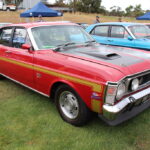How Long Should Clutch Last? How Much is a New Clutch?
Clutch replacement in automobiles is not a regular occurrence. But every car on the planet that runs on fuel needs a clutch replacement. Especially when it starts to feel loose, sticky, shaky, or squeaky.
Knowing exactly when to replace your clutch would not just make your life easier, but also keep your engine healthy. So, how long should clutch last? How much is a new clutch?
How Long Should Clutch Lust?
A car clutch is generally expected to last for about 60,000 miles. However, the time can vary between 30,000 miles-100,000 miles depending on the driver and driving condition.
Car clutches are made to last. Modern clutches are designed in a way that they should at least last half the car’s expected lifespan. Clutch plates are made of durable materials that are highly heat-resistant and can soak up a lot of friction. This allows the clutch to last over 50,000-60,000 miles easily.
This life span generally gets elongated for 80,000-100,000 miles for experienced drivers and cars driving in good driving condition. As the clutch is used to disengage the engine from the driveshaft, the least it is used the more it lasts.
Cars driving in the city’s stop-and-go traffic have a high clutch application, which increases wear and tear. But what affects the lifespan more is the driver experience. Experienced drivers using good driving habits, using engine braking and rev-matching use way use less amount of clutch reducing wear and tear.
Also read: 3 Things Happening if You Keep Driving with a Bad Clutch
What are the Signs that You Need to Replace Clutch?
A failing and malfunctioning clutch will result in loss of power, bad acceleration, hard shifting, loose clutch, squeaky noises, and burning smells.
A bad or failing clutch is fairly easy to spot, as it directly affects your driving conditions. Depending on the type of symptoms, your clutch can fail or break.
When you have a worn-out clutch you might face clutch slippage, hard or loose clutch pedal, and have trouble shifting gears.
Clutch slippage: The clutch operates on the clutch plate, which, when worn out, simply is not able to create enough friction causing the clutch to slip. This causes the engine to rev higher without any increase in speed.
Hard/loose clutch pedal: A clutch can also be problematic due to a bad pressure plate. As the pressure plate engages the clutch plate, its failure will either leave the clutch plate engaged or disengaged. This will have your clutch either feel relatively hard or loose.
Trending Video: How to Easily Bring Back to Life any Old Car Battery and Save Tons of Money (click to watch)
Grinding noises/Bad gear shifting: Since it’s the clutch that disengages the engine from the transmission, so you can shift. A failed clutch would also fail to disengage properly, causing the gears to grind and make shifting a lot harder.
A worn-out clutch plate if not removed also ends up breaking into multiple pieces. This other than multiplying your repair bill grinds the small metal pieces together, damaging transmission and causing burning smells. At this point driving your car should be the last thing to do.
What Causes Clutch to Wear out?
Using a clutch for a longer period, holding clutch and excessive clutch uses are three reasons a clutch wears out.
Clutch, as I said, has a definite lifespan, so they have to wear out at some point. But in many cases, the clutch plate wears out way before that.
One of the major factors causing faster wearing of the clutch is the driver itself. After all, the more clutch you use, the faster it wears out. New and inexperienced drivers, especially those driving manual, are more reliant on the clutch than the brakes themselves.
Always using the clutch to slow a car, holding the clutch when at traffic lights, using the clutch to hold on hills, resting foot on the clutch, accelerating or driving off the clutch are all excessive clutch uses. Because of which the clutch is engaged most of the time causing it to wear faster.
Another factor that causes the clutch to wear faster is the driving condition. Driving your car in the city, stop-and-go traffic, or hilly, muddy, snowy roads, or any place that requires you to continuously slow down and accelerate would just need more clutch input. And the more clutch you use, the faster it will wear out.
Also read: 10 SUVs that Will Last 300k+ Miles (with Photos)
What Happens if Your Clutch Fail During Driving?
If your clutch fails during driving you won’t be able to switch gears and would stay stuck on one gear.
A clutch can fail abruptly during driving, and it’s one of the worst things to happen on the road. But when it does happen, the most obvious thing would be stuck gear. When the clutch would fail, it would also fail to engage as the pedal would just drop down.
At that instant, you can do one of the two things.
- If you have to travel a longer distance and say you are on a motorway/highway, keep on driving. If you are even slightly experienced, you can easily use engine braking to slow the car down. As you are on the freeway, you won’t have to slow down to a point where the car stalls due to low speeds and tall gears.
- Or you can choose to stop and get your car towed. In such a case, just let off your gas and slowly apply the brakes till your car stalls itself.
Driving with failed clutch:
If needed, you can drive with a failed clutch. Do note that this can only happen if your car is not locked to start only in neutral, or an ignition lock that needs the clutch to be pressed to start the car.
Then, all you have to do is put the gear in first and start the car. As the car will lunge forward, press the accelerator, and you are good to go. To shift gear you must be experienced with your car to a point where you know when to shift gear by the feel of it or by looking at the rpm meter, you can shift gears as well.
Because to shift gear, you need to match engine rpm with drive-train. So by raising the rpm slightly higher from the point of shifting, you can try to time your shift when both rpm matches. This will be hard on your shifts, so you should only do it in case of emergency.
Also read: Should You Press Clutch While Braking (Easily Explained)
Do All Cars Have the Same Clutch Lifespan?
Different cars have different types of clutch depending on the requirement. Some only have single plate clutch while high-end performance cars use Kevlar clutches.
Small family cars are lightweight cars with smaller engines, producing power in the range of 80-120 hp. For such engines, a single-plate clutch is more than enough to handle such power. And they are good enough for 50,000 miles at the least.
If you take a mid-size car, they use a multi-plate clutch system that can transfer more torque and use multiple plate systems that generally have a longer lifespan as well. Powerful sports cars or muscle cars like Mustang typically use the disc-type clutch with an expected lifespan of 80,000-100,000 miles.
What affects the lifespan most is the material used for the clutch. Normal clutch plates are made with cast iron and high carbon steel. Then you have a more durable organic clutch disc with woven fiberglass to increase longevity. Even more durable to the organic clutch is the Kevlar Clutch that is 2-3 times more durable than organic clutches.
How to Extend Clutch Lifespan?
Using the clutch only when it’s needed for the time it’s needed is the only way to increase its lifetime.
A clutch can go bad for a lot of reasons. Even a bad transmission would ruin the clutch. But assuming that all conditions are normal because you maintain your car regularly, the most effective way to prolong a clutch lifespan is using them only when required.
If you have a high-torque car, maybe a diesel, you generally would start with the clutch. But as soon as you are going, let the clutch go.
- At higher speeds avoid using the clutch to slow down or cruise, rather use engine braking.
- Always remove your foot completely from the clutch after you use it, otherwise, you would still put some pressure on it.
- Put your car in neutral at traffic lights, or anywhere you have to stop for over a minute to disengage the clutch.
- Whenever changing gears, don’t switch at higher rev differences, rather use rev-matching to match the rpm of the engine and drivetrain, so the clutch has to do less work.
- Also, avoid accelerating off the clutch. If you are on a higher gear and going slow, don’t hold on to your clutch to avoid stalling, just down-shift.
These methods will help you prevent unwanted load on the clutch reducing wear and tear.
Also read: Do Hondas Last Longer than Toyotas (Comparison)
How Much Does it Cost to Replace Clutch?
The average cost of replacing the clutch on a manual transmission is between $900-$1700. While the same for automatic is 40% more costly.
Clutch replacement is a complicated process that needs more than a few tools to perform. The clutch is located in the middle of your engine and transmission, which needs to separate to access the clutch assembly. The complexity of the job makes clutch replacement a tougher process taking between 2-6 hours.
This makes labor cost the most expensive part of the job. The average cost people pay for a clutch replacement is around $1300 in the US. That is given that you get the whole clutch replacement.
But it can be that you only have one or two failed parts, like worn-out clutch plates. A good set of clutch plates is not more than $150-$300. That plus the labor charge. Same if you have a bad pressure plate, the cost on average for a new one is around $250.
But when you go for a full assembly, it can be between $900-$1700 depending on clutch-type, model, make and brand. Dealerships are also costlier than mechanic shops.
Here is a quick list of some common cars and their average clutch replacement cost to give you an idea.
Make/ModelPrice
- Honda Civic: $1,200
- Ford Mustang: $1,100
- Subaru WRX: $1,200
- Chevy Camaro: $1,500
- Jeep Wrangler: $1,600
- Volkswagen Jetta: $1,700
- Fiat 500: $1,300
- Ford Focus: $990






